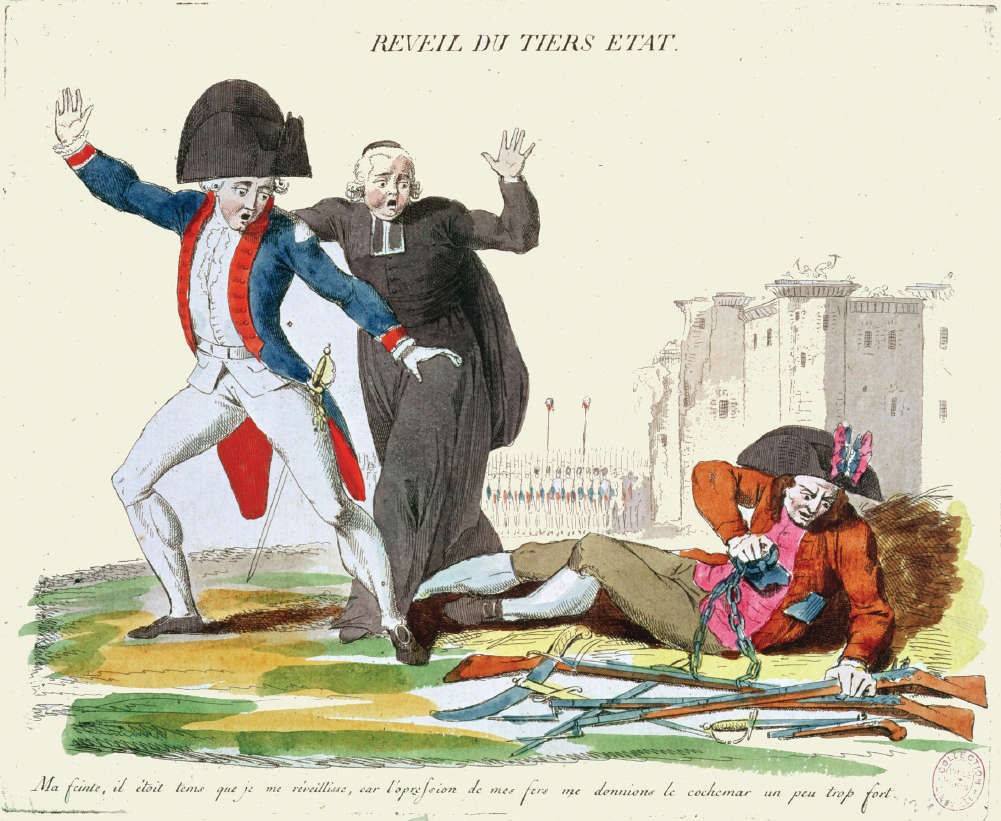Visual Source 16.2
A Reversal of Roles
Despite the hope for harmony, many soon came to see the revolution as a sharp reversal of class roles. Visual Source 16.2, entitled “The Awakening of the Third Estate,” illustrates this stage of the revolution. In the foreground are male figures representing the three estates of old France. While a member of the Third Estate breaks his chains and takes up arms, members of the clergy and nobility recoil in horror. In the background is the Bastille, the fortress/prison and symbol of the old regime, which was seized by a crowd in July 1789 and subsequently demolished. Also displaying this reversal of class roles are the three French females at the opening of this chapter. Here three female figures symbolize the three estates, with the Third Estate, holding a child, now riding on the back of the nobility and in a superior position to that of the clergy. The caption reads: “I really knew we would have our turn.”

Question
What different impressions of the revolution are conveyed by these images as compared to that of Visual Source 16.1?
Question
What particular fears might animate the horror with which the clergy and nobility greet the awakening of the Third Estate?
Question
Notice that the woman representing the Third Estate in the chapter-opening image holds a distaff, a tool used for spinning, as well as a child. What does this suggest about the roles of women in the new order?